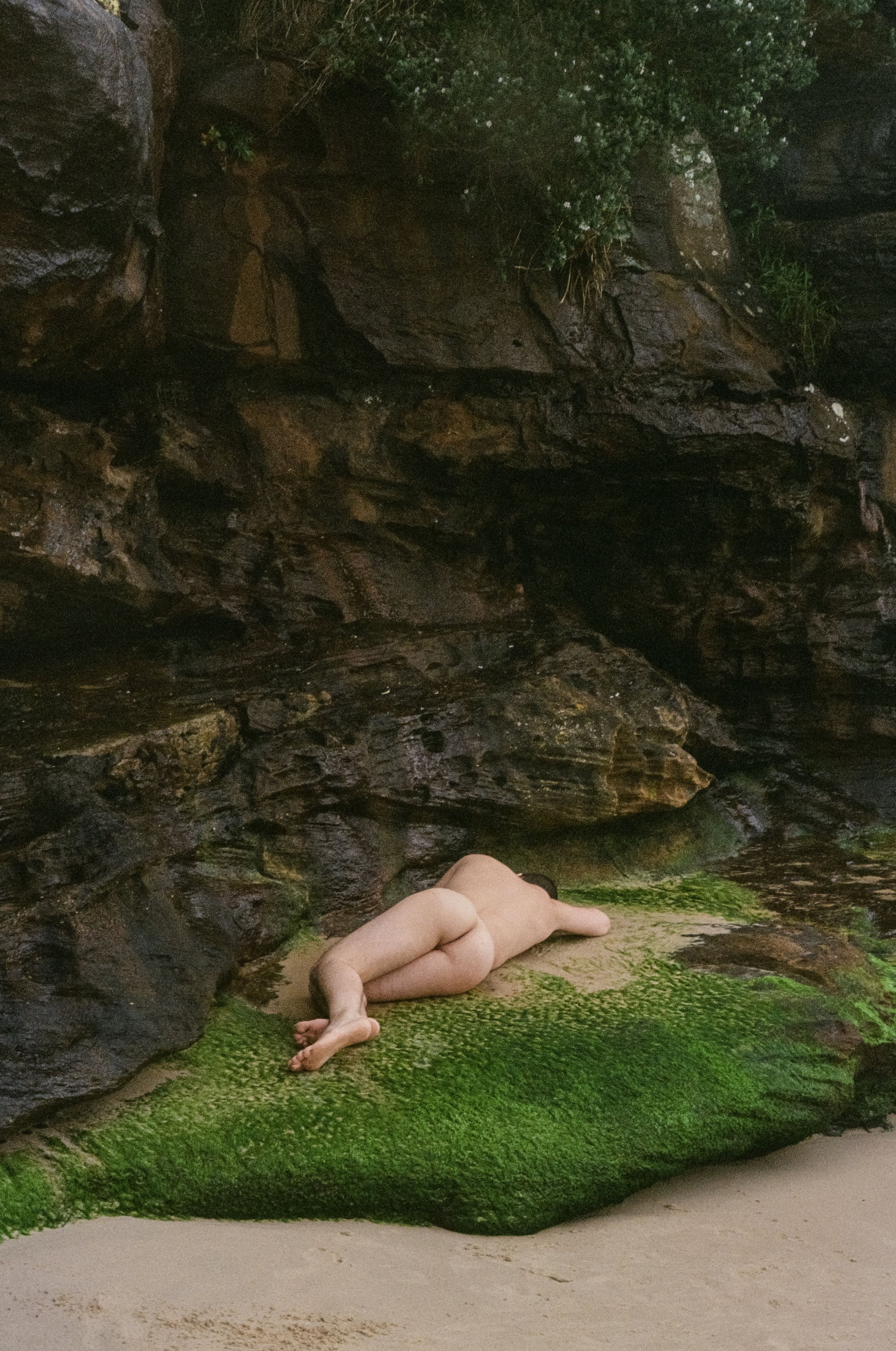
Bowen Halkett [they/he] is an analogue photographer, exhibition founder and curator based on unceded Gadigal land. Bowen’s art explores themes of queer identity and culture, human experience, and environmentalism. Their photography is raw and unedited and genre bends photojournalism with fine-art photography. Bowen is the co-founder of YES Exhibition, an annual exhibition celebrating LGBTQ+ artists and their work on the anniversary of Australia voting “yes” to equal marriage rights.
Society has traditionally glorified and upheld a vision of masculinity that is as damaging as it is unattainable. From a young age, boys are socialised to exhibit particular behaviours, exemplified by such maxims as “boys will be boys”. By the time they reach adulthood, men are expected to shun any sign of femininity. This series challenges the ideals associated with being a man by celebrating other forms of masculinity that are often rejected and marginalised. By portraying masculinity as something that can be soft and delicate, I hope to broaden the narrow scope that is perpetuated by the gender binary. Models featured in these series, ‘Adorned’ and ‘Nude at Obelisk’, are Samuel Luke and Joshua Cameron.
Tell us how you got into photography, and what has inspired you to go in this direction with your work.
I was introduced to a darkroom in high school and discovered Tumblr in my teens which definitely ignited my passion for photography; buying my first analogue camera cemented it. Finding my chosen family has inspired me greatly and has encouraged me to become more present within the community and in turn has influenced my art practice by helping me to conceptualise my work, document individuals’ journeys of self-discovery, and show representation. All this has influenced my current approach to photography, which is to represent queer joy in a raw and unedited way.
We would love to hear a bit more about the YES Exhibition, how it started and the work you continue to do.
I started a photography series in 2017 during the plebiscite that documented local businesses and residences showing explicit support for equal marriage rights. It was a gratifying experience, and one that I wanted to share with others. That’s how YES Exhibition was born; a need to acknowledge and celebrate the LGBTQ+ community. As YES Exhibition has grown, I have realised just how much this platform is needed in the arts community. A part of the ethos of YES Exhibition is there aren’t any limitations put on artists on the stories they tell or how they tell them; it’s a safe space for artists to freely express themselves. I think what’s most important is that the stories we share about LGBTQ+ people come from the community itself. This year’s showcase in mid-November (details will be revealed soon) will be the fourth event held and the fifth year running. It will feature the majority of the line-up of artists exhibiting their art with YES Exhibition for the first time. Future plans are to go beyond the annual exhibition, to expand and find more ways to uplift queer voices.
What led you to explore these important topics, and how are you personally connected to them?
For many people in the LGBTQ+ community, learning to embrace their own body is a long and difficult process. This has been true of my own experience as I have often been made to feel that my body does not reflect the ideal ‘masculine’ figure. My photography aims to document moments in time where queer people feel most at peace with their body, and that sense of solace is at the heart of this series. I think that by creating this body of work, I was able to also find some peace within myself.





